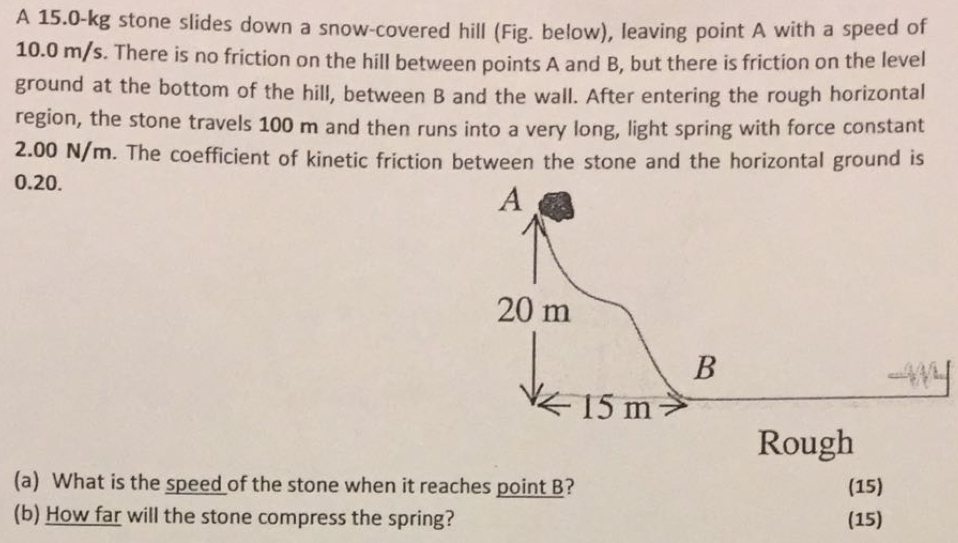A 15.0-kg stone slides down a snow-covered hill (Fig. below), leaving point A with a speed of 10.0 m/s. There is no friction on the hill between points A and B, but there is friction on the level ground at the bottom of the hill, between B and the wall. After entering the rough horizontal region, the stone travels 100 m and then runs into a very long, light spring with force constant 2.00 N/m. The coefficient of kinetic friction between the stone and the horizontal ground is 0.20. (a) What is the speed of the stone when it reaches point B? (15) (b) How far will the stone compress the spring? (15)
